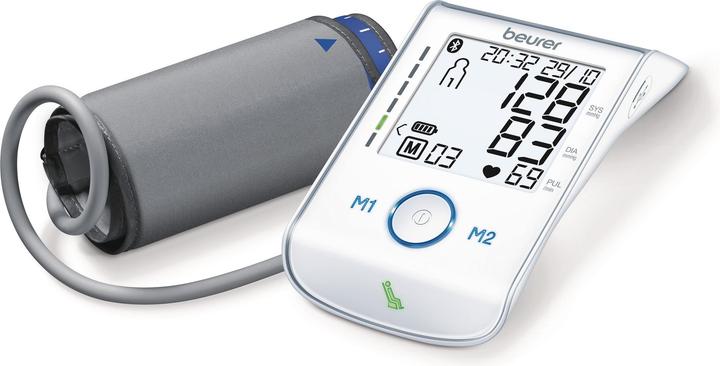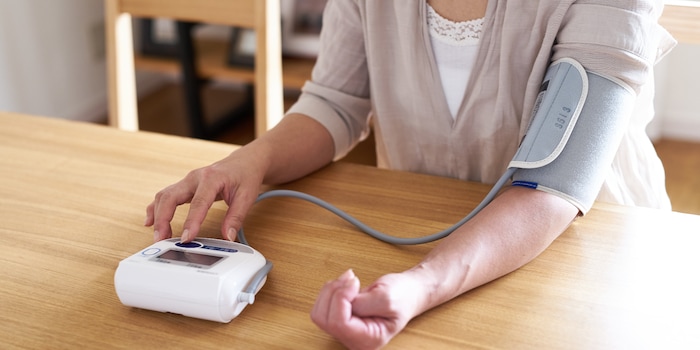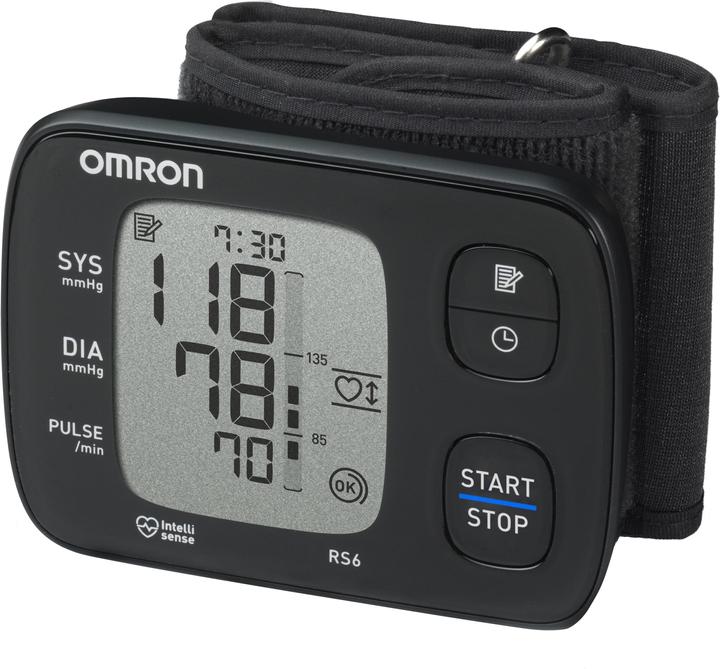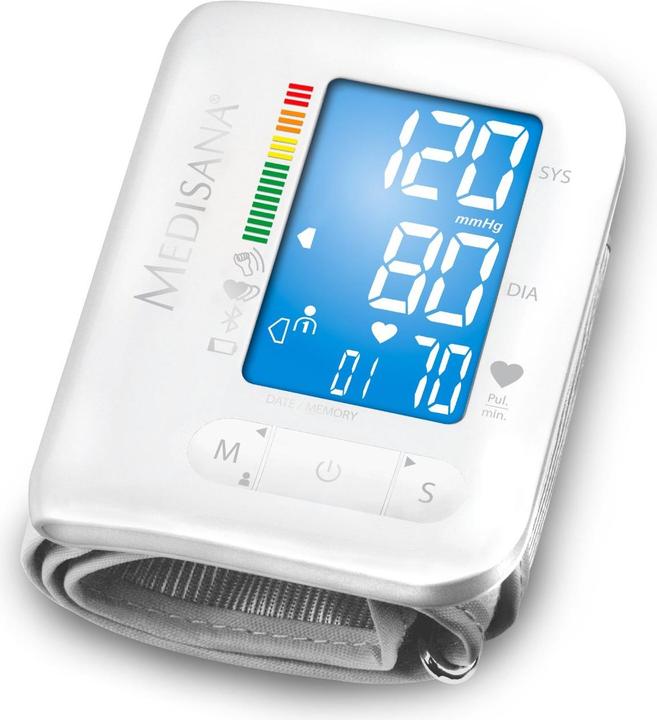

High blood pressure: why you should know your blood pressure
Diagnosis of high blood pressure - It is estimated that one in four adults in Switzerland has high blood pressure. But what exactly is hypertension? Here you can find out more about the topic, how to get your personal blood pressure readings quickly and reliably and how to interpret them.
What do we mean by blood pressure?
A certain amount of pressure is needed in our arterial blood vessels to keep the blood flowing in the circulatory system. Every heartbeat triggers a pressure wave, which is transmitted to the arteries. Blood pressure is regulated by an interplay of vessel width, cardiac output and blood volume. In many people, blood pressure is elevated and above the critical limit. High blood pressure is not usually noticeable, which is why a third of those affected are unaware of it.
This is why you should measure your blood pressure regularly
High blood pressure that persists over a long period of time damages your heart and blood vessels. For this reason, you should measure your blood pressure at least once a year from the age of 18. Elevated blood pressure (hypertension) can have the following consequences:
- The blood vessels harden and thicken
- The risk of a heart attack or stroke increases by a factor of two to ten.
- Consequential diseases such as heart attack, cardiac insufficiency, stroke, renal insufficiency, circulatory disorders in the legs and visual impairment can occur.
How to measure correctly
Blood pressure can be measured on the upper arm or wrist. The measurement results are just as reliable when measured on the wrist as on the upper arm. However, there is a restriction for older people, smokers and patients with cardiac arrhythmia and diabetes. It is recommended that they measure their blood pressure on the upper arm.
To get the most accurate measurement result possible, it is best to measure regularly and always at the same time while seated. Before you put on the blood pressure monitor, you should remain calm for about five minutes. This means that you should refrain from eating, drinking, moving or talking during this time. Keep your arm still during the measurement and do not clench your hand into a fist. Make sure the cuff is put on correctly. This should always be at heart level during the measurement. This also applies if the measurement is taken on the wrist. Otherwise the measurement results will be distorted. Sit down, rest your elbows on a table and always measure on bare skin. Always take a break of at least five minutes between measurements.
Errors during the measurement
The following incorrect uses of blood pressure monitors can lead to incorrect readings:
- Cuff was put on too tight/too loose
- The cuff is not at heart level
- The pause between two measurements was too short
- You were talking or moving during the measurement
Blood pressure monitors for the upper arm
The test winner
This Beurer blood pressure monitor was chosen as the winner in the "ETM-Testmagazin" 02/2015. The patented resting indicator guarantees precise blood pressure measurement. During the measurement, the blood pressure monitor determines whether the person taking the measurement is in an adequate resting state based on the course of the pulse wave and its progression during the measurement time. The associated app (iOs and Android) provides you with reliable analyses.

The companion
This ultra-modern and beautifully designed measuring device is the ideal companion when travelling. The app (iOs and Android) gives you a precise overview of your blood pressure values.
Blood pressure monitors for the wrist
The silent one
This wrist blood pressure monitor has a beautiful design and a very large display. It guarantees easy operation.
The price-performance miracle
This inexpensive blood pressure monitor measures reliably and transmits the data to the corresponding app.
To all blood pressure monitors
Interpreting measured values
When the blood pressure value is measured, there are two values to consider. The higher value (systolic) measures the blood pressure when the heart is tense and the lower value when the heart is relaxed (diastolic).
Classification of blood pressure values according to WHO (World Health Organisation) in mmHg: [[image:8022591]] mmHg (millimetres of mercury, also mm Hg) is a measure of blood pressure.
With optimal and normal blood pressure values, there is no need for action. If your blood pressure is "highly normal", it is advisable to check your blood pressure regularly in order to recognise possible high blood pressure at an early stage. In the case of high blood pressure, also known as hypertension, a visit to the doctor is recommended to check the values professionally and take action if necessary.
High blood pressure - what now?
If the blood pressure values are higher than 140/90 mmHg in a single measurement, this is not yet sufficient for a conclusive diagnosis. Only if elevated blood pressure values are detected in at least three measurements within a few weeks is it highly likely that you are a hypertensive patient. In this case, we recommend a visit to the doctor. For many patients, however, it is not easy to make a diagnosis because their blood pressure values fluctuate greatly or are only too high in certain life situations. In these cases, longer-term investigations are necessary.
If you have been diagnosed with mild or moderate hypertension/high blood pressure (upper value between 140-179 mmHg, lower value between 90 -109 mmHg), a more "blood pressure-friendly" lifestyle is advisable. It is possible that you can normalise your blood pressure simply by eliminating or reducing your risk factors. If your blood pressure exceeds certain values, further investigations by a doctor are necessary.

"Blood pressure-friendly" lifestyle:
- Don't smoke: Smoking damages the blood vessels and thus increases the risk of high blood pressure.
- Eat a balanced diet: Lots of fruit, vegetables and wholemeal products, low-fat dairy products and little animal fat can have a positive effect on your blood pressure.
- Eat less salt: For some people, the salt in their diet increases their blood pressure
- Drink alcohol in moderation: Alcohol is one of the factors that increase blood pressure.
- Exercise yourself: Blood pressure can be lowered through regular exercise in everyday life and sports training.
- Reduce your excess weight: Try to maintain or achieve a normal body weight.
- Reduce stress: Make sure you have enough relaxation in your life.
What about low blood pressure?
Low blood pressure is not dangerous in itself. On the contrary: if blood pressure values are permanently too low for no recognisable reason, this tends to mean a longer life expectancy and a lower level of illness. However, when blood pressure drops and hypotension occurs, less blood flows through the brain, so it receives less oxygen. Low blood pressure can therefore cause symptoms such as visual disturbances, ringing in the ears, dizziness or fainting. Especially if blood pressure suddenly drops rapidly, the body quickly reacts by fainting. However, those affected recover quickly when lying down and wake up after a short time.
If your low blood pressure does not cause any symptoms, treatment is not absolutely necessary.
If in doubt, we advise you to seek medical advice.
Friends, family, cats and good wine are my lifeblood.


